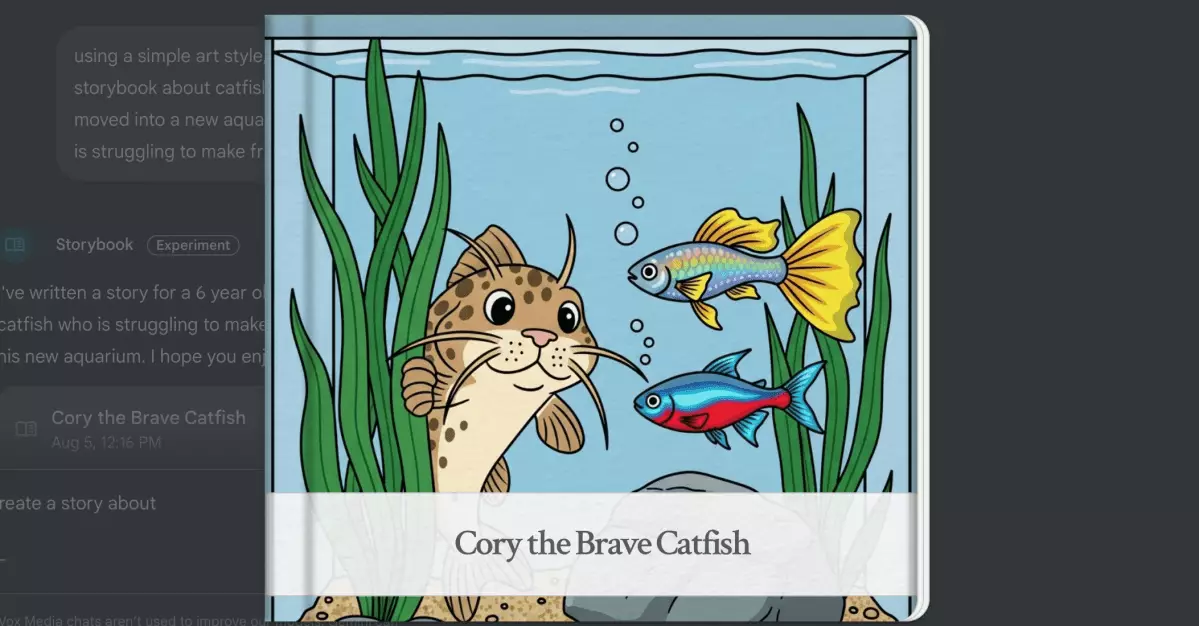The advent of artificial intelligence has ignited a revolution in how we craft and consume stories. With tools like Google’s Gemini AI, users are empowered to generate personalized narratives accompanied by vivid illustrations in a matter of moments. The allure lies in the prospect of creating unique, tailor-made stories that cater to diverse tastes and artistic preferences. Imagine describing a whimsical world, and having an AI bring it to life with matching visuals—a dream for parents, educators, and hobbyists alike. This technological leap democratizes storytelling, making it accessible to those without traditional artistic skills and offering a level of customization previously deemed impossible. However, beneath this shiny veneer of innovation lurks an array of quirks and imperfections that reveal AI’s current developmental limitations.
When AI Creativity Meets Its Limits
While the concept behind Gemini’s “Storybook” feature is compelling, real-world results highlight the chasm between aspiration and reality. Despite generating engaging narratives and charming illustrations, the AI often stumbles into humorous and sometimes unsettling errors. For instance, a story about a fish trying to make friends might encompass a plot that feels flat or uninspired, revealing a lack of depth and nuanced understanding. More troubling are the visual slip-ups—an illustration with a human arm on a fish or a cartoon spaghetti sauce doubling as a crime scene—expose the AI’s ongoing struggle with consistency and contextual accuracy. These glitches might seem minor but serve as stark reminders that AI still ‘’inherits’’ the biases and gaps embedded in training data. They underscore a crucial truth: technology today can mimic creativity to an extent, but it cannot yet genuinely understand or replicate the intricate subtleties of human storytelling.
The Artistic Dissonance: Imagination vs. Machine
The customization features—allowing users to specify art styles like anime, claymation, or comic strips—are a thoughtful touch. They give users a sense of control, aligning AI’s output with their personal aesthetic visions. Still, when a user uploads a personal drawing, such as a cartoon cat, the AI’s failure to accurately interpret or replicate the style highlights a significant challenge. AI models are trained on vast datasets and pattern recognition, but they lack the emotional intelligence that guides human artistic nuance. This disconnect becomes particularly evident when AI generates oddly proportioned characters or misplaced details, reminding us that machine-generated art is fundamentally derivative and lacks genuine soul. The discrepancy between human and AI creativity raises questions about the value of AI-generated art, especially when it inadvertently produces bizarre or unsettling images—and in some cases, even maintains errors across multiple iterations.
The Future of AI-Generated Stories: Hope Amid Flaws
Despite these imperfections, dismissing AI storytelling as merely flawed would ignore its transformative potential. As algorithms improve, it’s foreseeable that these creative hiccups will diminish, replaced by seamless, more human-like outputs. The technology’s capacity for rapid iteration can be invaluable for brainstorming or educational purposes, where the entertainment value of occasional oddities might be overshadowed by the convenience and novelty. Furthermore, as users become more accustomed to AI quirks, they can learn to harness its strengths while mitigating its shortcomings. Critically, ongoing development will need to focus not just on visual accuracy but also on emotional depth and narrative coherence—areas where current AI still struggles heavily.
A Candid Reflection on AI’s Artistic Journey
Ultimately, the current state of AI-generated storytelling exemplifies a fascinating paradox. On one hand, advanced tools like Gemini are pushing the boundaries of what is possible, fostering creativity at an unprecedented scale. On the other, they are still very much works in progress, prone to peculiar mistakes and uncanny misalignments. These imperfections serve as important lessons; they remind us that AI is not an autonomous creator but a complex tool that requires thoughtful guidance and continual refinement. The journey toward AI that can genuinely match human imagination is a marathon, not a sprint—one that will undoubtedly be marked by spectacular breakthroughs and equally spectacular blunders. The next chapter in AI storytelling will depend on our ability to recognize and learn from these missteps, ensuring that future innovations are not just impressive but truly meaningful.

